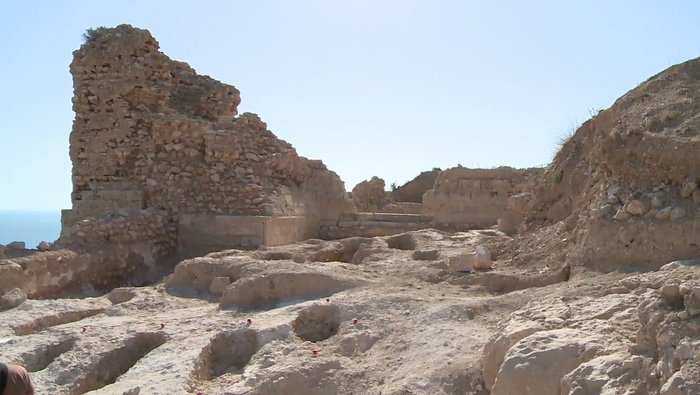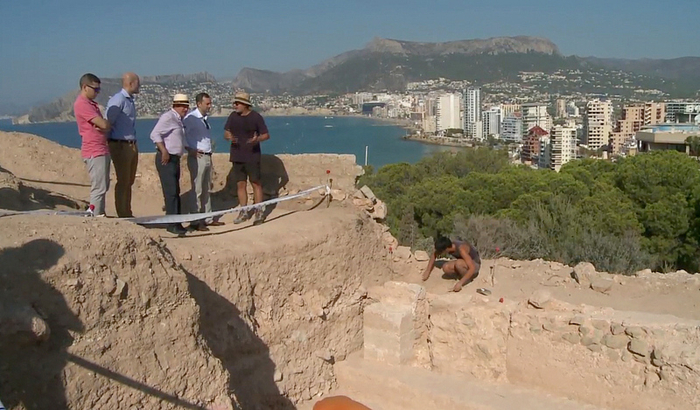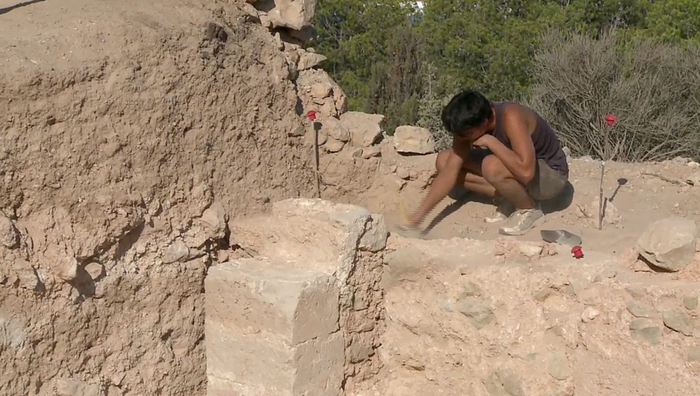- Region
- Vega baja
- Marina Alta
- Marina Baixa
- Alicante
- Baix Vinalopo
- Alto & Mitja Vinalopo
-
ALL TOWNS
- ALICANTE TOWNS
- Albatera
- Alfaz Del Pi
- Alicante City
- Alcoy
- Almoradi
- Benitatxell
- Bigastro
- Benferri
- Benidorm
- Calosa de Segura
- Calpe
- Catral
- Costa Blanca
- Cox
- Daya Vieja
- Denia
- Elche
- Elda
- Granja de Rocamora
- Guardamar del Segura
- Jacarilla
- Los Montesinos
- Orihuela
- Pedreguer
- Pilar de Horadada
- Playa Flamenca
- Quesada
- Rafal
- Redovan
- Rojales
- San Isidro
- Torrevieja
- Comunidad Valenciana


- EDITIONS:
 Spanish News Today
Spanish News Today
 Murcia Today
Murcia Today
 Andalucia Today
Andalucia Today
La Pobla D’Ifach Calpe
A mediaeval town dating from the 13th century repopulation of the Kingdom of Valencia

The medieval town of Ifach in the municipality of Calpe is at present unique among all such archaeological sites in the Comunidad Valenciana, and is the only town dating back to the times of the Reconquista which has not been extensively investigated, excavated or transformed since it fell out of use.
Situated at the foot of the spectacular headland which has been named one of the Wonders of the Comunidad Valenciana, the archaeologists at the MARQ archaeological museum in Alicante have carried out  a series of summer digs since 2005 with the aim of compiling more complete information and eventually converting the area into a museum.
a series of summer digs since 2005 with the aim of compiling more complete information and eventually converting the area into a museum.
The Pobla d’Ifach dates from the repopulation of the Kingdom of Valencia in the latter part of the 13th century, after the area was reconquered from the Moors by Christian forces. Under the crown of Aragón incentives were offered to those re-colonizing the area, and people keen to seek their fortune in a new location gradually made their way to the eastern coast.
Before reaching the shore itself, though, the new colonists tentatively established themselves inland through castles like the one near the modern town of Pego, where since the 1990s archaeologists have been investigating the castle of Ambra. This is a kind of “pre-Ifach” construction dating from the period between 1254 and 1276, when life for the colonists was very hard indeed, as they had to face a prolonged Mudéjar  uprising. Strong fortification was needed to protect any settlers.
uprising. Strong fortification was needed to protect any settlers.
In this context, on 8th April 1282 Pedro III ordered that a town should be built on the lower slopes of the Peñón d’Ifach in order to provide protection and security for those living on this stretch of the coastline, but it was not until 1298 that Roger de Llúria, an admiral in the service of the King of Aragón, requested permission from Jaime II to construct a walled and fortified settlement there.
Shortly after being granted the land Roger de Llúria died in 1305, but construction continued under the supervision of his daughter, Margarita de Llúria. It was she who ordered the construction of a church dedicated to Nuestra Señora de los Ángeles, and statues of her father can be found in the city centres of Barcelona and Tarragona.
The Pobla which has been discovered in Ifach consists of the area inside a perimeter wall measuring 800 metres in length. The best preserved area is at the northern end, where over 200 metres of wall and nine towers remain, and when it was still standing it is estimated that it reached a height of between ten and twelve metres. The towers are thought to have stood out to a height of around 15 metres, and a parapet wall on the  top would have allowed defenders to move around the Pobla and keep vigilant watch on the Mediterranean and the coastal area.
top would have allowed defenders to move around the Pobla and keep vigilant watch on the Mediterranean and the coastal area.
In the past it was known that access to the Pobla was through at least one gate on the western side, and during the summer of 2014 the main entrance road was finally found.
The church dedicated to Nuestra Señora de los Ángeles is located by the north-western wall of the Pobla, and is an impressively large rectangular building measuring 25 metres by 14 metres. This means it occupies an area of close to 400 square metres, with the remains of the walls reaching a height of between two and three metres.
According to documentary evidence the church consisted of a central nave with side chapels, but so far only the remains of the southern chapel have been excavated and fully documented. This southern chapel, which was enclosed by a perpendicular wall, was an area of 18 square metres, roofed by a series of vaults from which the remains of the collapsed stone ribs have been found in recent excavations.
The best preserved and most spectacular structure yet found in the Pobla d’Ifach, though, is the bell-tower,  which was an almost square construction measuring around six metres on each side. The two parts straddled the wall on the northern side of the town next to the church, and the tower was finished in the same style of masonry as the church. Inside was a winding staircase, half a turn of which has survived the centuries, leading to the belfry.
which was an almost square construction measuring around six metres on each side. The two parts straddled the wall on the northern side of the town next to the church, and the tower was finished in the same style of masonry as the church. Inside was a winding staircase, half a turn of which has survived the centuries, leading to the belfry.
Although there is a large amount of fallen rock in the area the tower still survives to a height of ten metres, and it is believed that it originally stood over twenty metres tall.
Outside the main access gate to the church of Nuestra Señora De Los Ángeles is the 14th-century burial ground which served the Pobla, where various graves and human remains have been found. It appears that the graves are distributed around one main tomb in the centre: this is the only one which is closed with two slabs of stone.
Additional articles:
01-09-2014 Mediaeval defence bastion slowly uncovered in Ifach, Calpe






















